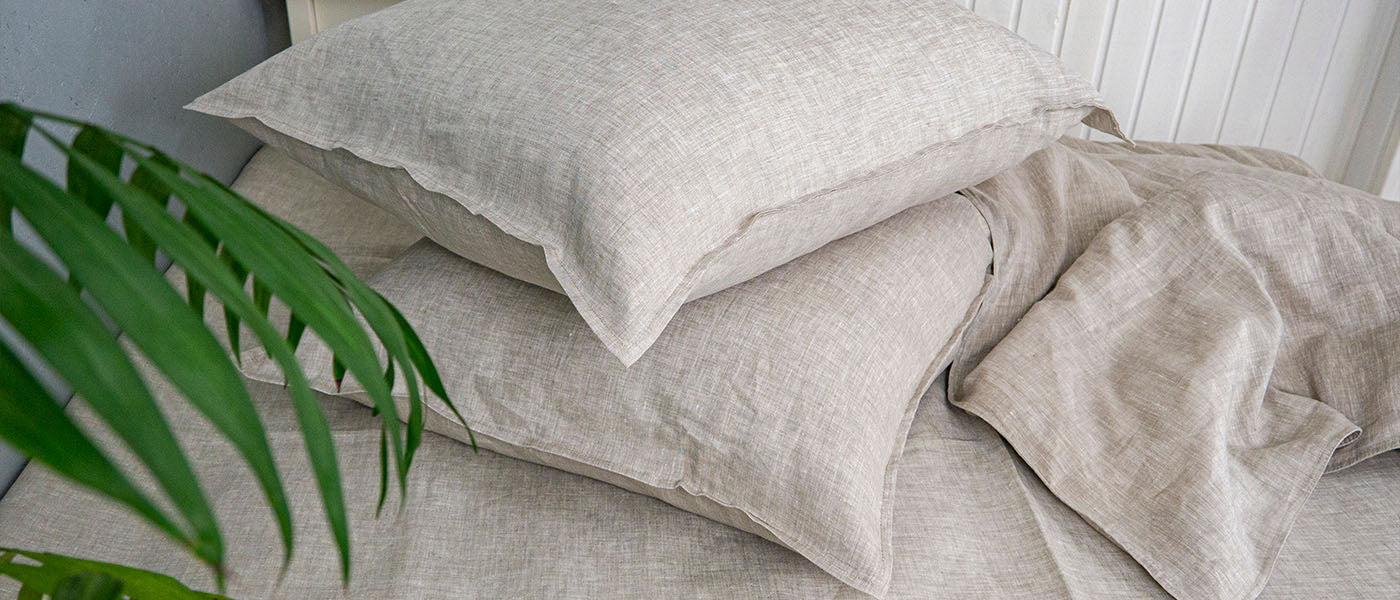
How to Make Pillow Covers: 3 Basic Types
Source: Miracle-15/shutterstock.com
One quick and effective way to refresh the look of a room is by changing out the small decor items like candles, artificial flower arrangements and pillows.
In this article, we’ll go over the basics to make a custom pillow cover without dedicating too much time or money. We’ll cover three types: An envelope Pillow Cover, Button Pillow Cover and a Zipper Pillow Cover.
Gather your supplies - some you may already own:
- The fabric of choice for the covers. Select something that’s not too thick and not too thin, the fabric should have durability. If the fabric is washable, run it through the washing cycle once and let it dry and iron.
- Notions: thread, needles and pins.
- Sewing machine (optional) - it’s much faster to sew these covers using a sewing machine, but you can also do this by hand using a backstitch or a chain stitch.
- Rotary cutter or fabric scissors
- Small scissors
- Hobby knife
- Self-healing cutting mat
- Measuring tape
- Tailor’s chalk or a soft pencil - something to mark the fabric that easily washes off
- Iron
- Zipper (optional) - don’t pick a zipper that has wide teeth and match the zipper tape to the background color of your fabric.
- Large decorative button and cord (optional)
Use a Self-Healing Cutting Mat to Keep Your Counter Safe
Envelope Pillow Cover
We love this technique because it’s easy and requires not much more than the fabric and sewing supplies. There is no closure. The back is made from two panels that overlap to conceal the opening. And you don’t even need a pattern! The cutting mat is the hero here.
Step One:
Measure the pillow insert at the edge; ours is 20 inches. For the front, lay out the fabric on the cutting mat by aligning the bottom left corner of the material with the grid on the cutting mat. Mark 20” on both height and width edges of the fabric. Use a tailor’s chalk or a pencil to mark the lines on the fabric. Add 1” total to height and width for a ½” seam allowance all around. Use the grid in the cutting mat to make sure the corners are perfectly square. Use the rotary cutter or craft scissors to cut out the pillow front.

Source: MaxCab/shutterstock.com
Step Two:
For the back, we’re going to use a quick formula to get the right size panels for the overlap. Divide the pillow height in half, then add 5. So in our case, (20/2) + 5, which equals 15. We’re going to cut two panels that are 20 x 15”.
Step Three:
The overlap panels have one finished edge so that the fabric does not fray and that the pillow looks finished. Do this by folding the edge of the fabric twice no more than ½”, then use a top stitch to finish and sew along the edge.
Step Four:
Pin the front panel to the back panels, the wrong side of the fabric out, right side of the fabric together, then sew all around.
Pro Tip: For neater pillow corners on the finished case, round the corners a bit when sewing together and then trim off the excess seam allowance to reduce the bulk.
Step Five:
Turn the cover inside out, iron out any wrinkles, add your insert and you’re done!
Button Closure Pillow Cover
This can be both decorative and functional. Follow the steps for Envelope Pillow Cover. You can adjust the height of the back panels by making one shorter and the other longer. Then before completing Step Five, follow these steps:
Cut a cord long enough for the button and add 1” for allowance. General formula is the diameter of the button x 2 + 1”.
Browse Our Craft Scissors for Your Next Sewing Project
Make a loop and pin in place at the center of the top back panel, that’s the one that’s overlapping the other panel. Sew the cord to the edge. Turn inside out and sew on the button to the bottom panel. Iron out any wrinkles, add the insert, and done.

Source: Boumen Japet/shutterstock.com
Zipper Closure Pillow Cover
This is the more challenging of the three examples here. If you are using a sewing machine, you may need a zipper foot depending on the zipper you use and the machine you have.
Step One:
Follow Step One from the Envelope Pillow Cover directions above, however, cut two panels.
Step Two:
Pin the zipper to the edge of one side of the pillow. The right side of the fabric should be facing the right side of the zipper. Sew together. Then pin the other panel to the other side of the zipper and sew these two together.
Pro Tip: To cut the zipper down to size, open the zipper by moving the slider all the way down to the stopper. Start pinning to the pillow panel from the bottom end, working your way to the top. Cut off any excess tape from the top of the zipper. Create a new top stop with thread using the overlock stitch in between the zipper teeth close to the end of the zipper tape.
Step Three:
Close the zipper and pin the remaining three sides of the panels together. Then sew closed.
Step Four:
Turn the pillow case right side out, iron out any wrinkles, add the insert, and voila!